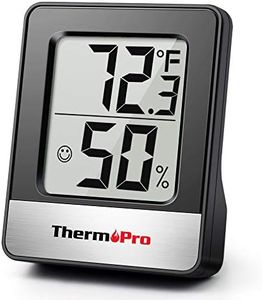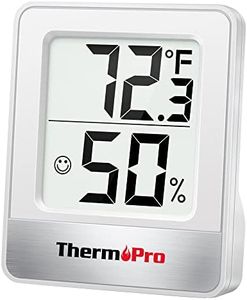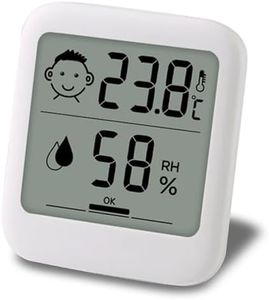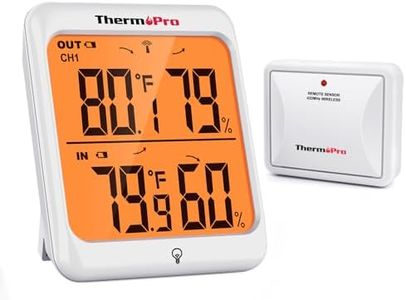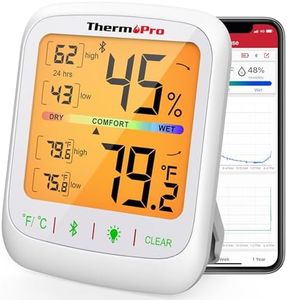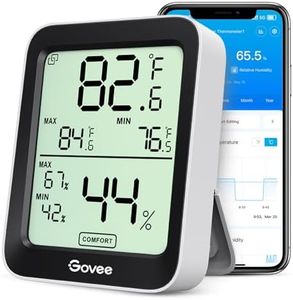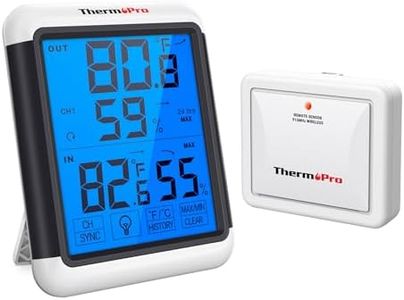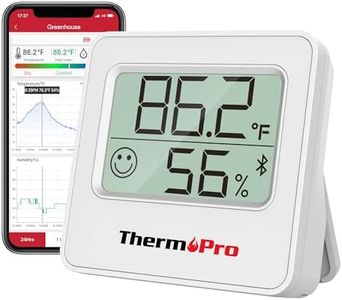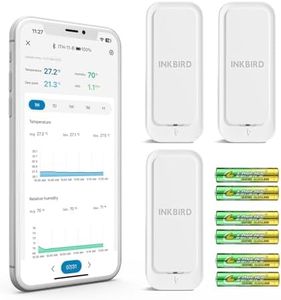We Use CookiesWe use cookies to enhance the security, performance,
functionality and for analytical and promotional activities. By continuing to browse this site you
are agreeing to our privacy policy
10 Best Indoor Thermometers
From leading brands and best sellers available on the web.Buying Guide for the Best Indoor Thermometers
Choosing an indoor thermometer may seem simple, but there are a variety of factors that can make one model better suited to your space and needs. Whether you're concerned about accuracy, additional features, or simply want a clear display, understanding what really matters will help you find the perfect fit. Before choosing, consider where you'll use the thermometer, how you'll read it, and if you'd like it to track other conditions like humidity.AccuracyAccuracy tells you how close the thermometer's readings are to the actual room temperature. This is important if you need reliable data for health reasons, plant care, or fine-tuning heating and cooling. Indoor thermometers can vary—basic ones might be less precise (off by 2-3 degrees), while better-quality models offer higher accuracy (within 1 degree). If you just want a general idea of temperature, high precision may not be needed, but if you're monitoring sensitive environments, choose a more accurate option.
Display TypeThe display is the way you see the temperature reading. Some thermometers use traditional analog dials, while others have digital screens. Analog dials are simple and don't require batteries but can be harder to read. Digital displays are easier to read, often show larger numbers, and may have extra info like humidity. If you want instant, clear feedback—a digital display is best. For a classic look or if you don't want to worry about batteries, analog might suit you.
Measurement UnitsMost thermometers display temperature in Fahrenheit or Celsius, and some offer both. This spec is only important if you have a preference, or if you need to switch units easily. If you move between countries a lot or simply want the option, look for a thermometer that can switch between units.
Additional Features (Humidity, Memory, Alerts)Many indoor thermometers include extra features—such as a built-in hygrometer (to measure humidity), memory functions (to track high/low temperatures), or alerts when the temperature goes outside a set range. Humidity monitoring is helpful if you're concerned about mold, comfort, or specific needs for pets or plants. Memory helps you track trends over time. Alerts are useful if you need to take action at certain temperatures. Choose these extras based on how closely you want to monitor your indoor climate.
Size and Placement OptionsThe size of the thermometer and how it can be placed in a room—wall-mounted, tabletop, or magnet—affect ease of use and where it fits best. Smaller models are easy to tuck away but might be harder to read. Larger ones give a clearer display but need more space. Think about where you'll put it and whether you want the flexibility to move it around.
Power SourceIndoor thermometers may be battery-powered, plug-in, or manual (like traditional analog versions). Battery-powered ones are portable but need occasional battery changes. Plug-in models can offer more features but require an outlet. Manual thermometers don't need any power but lack modern features. If you want a hassle-free experience, consider how often you're willing to change batteries or if an outlet is nearby.

